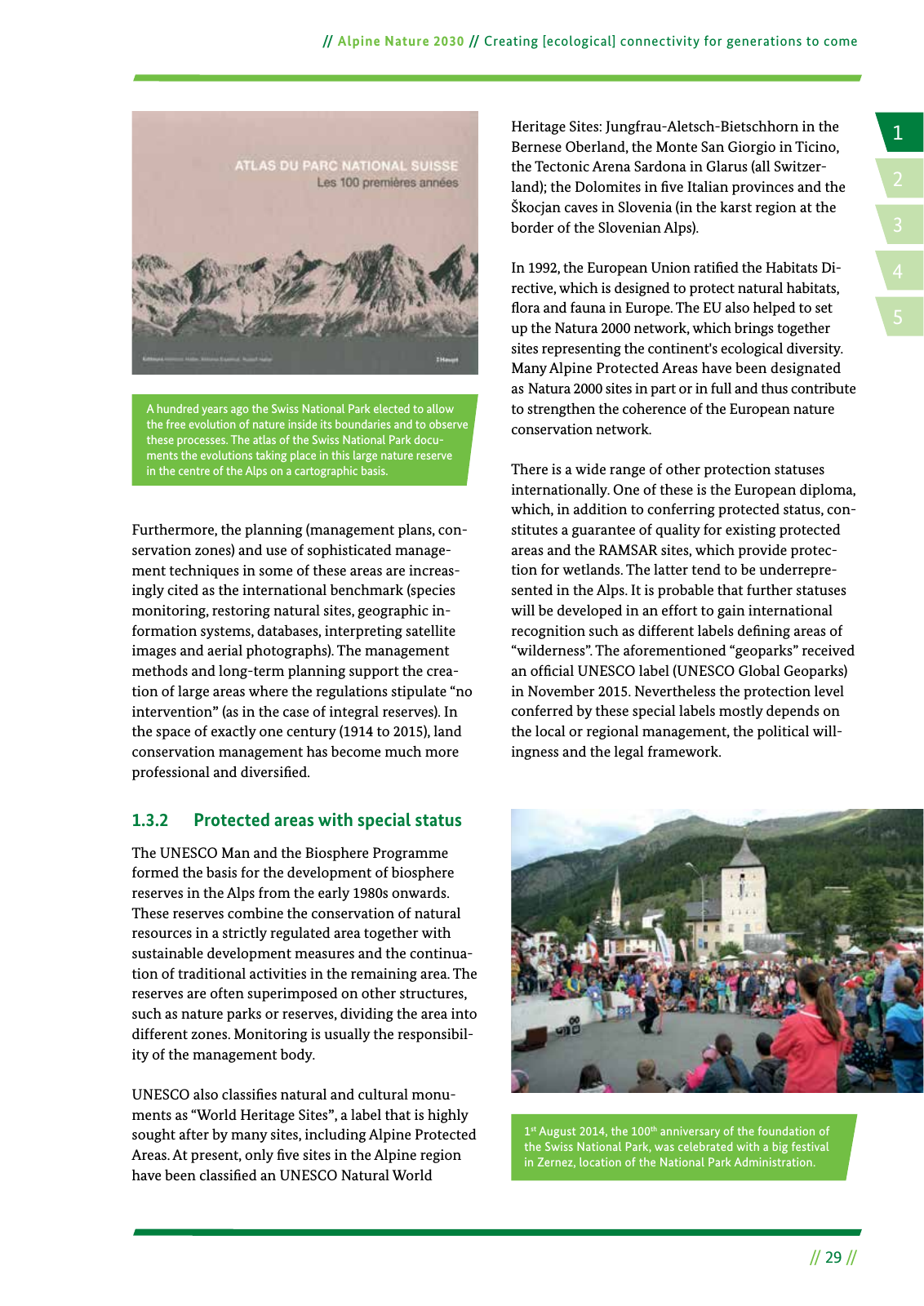14 2 5 3 29 Alpine Nature 2030 Creating ecological connectivity for generations to come Furthermore the planning management plans con servation zones and use of sophisticated manage ment techniques in some of these areas are increas ingly cited as the international benchmark species monitoring restoring natural sites geographic in formation systems databases interpreting satellite images and aerial photographs The management methods and long term planning support the crea tion of large areas where the regulations stipulate no intervention as in the case of integral reserves In the space of exactly one century 1914 to 2015 land conservation management has become much more professional and diversi ed 1 3 2 Protected areas with special status The UNESCO Man and the Biosphere Programme formed the basis for the development of biosphere reserves in the Alps from the early 1980s onwards These reserves combine the conservation of natural resources in a strictly regulated area together with sustainable development measures and the continua tion of traditional activities in the remaining area The reserves are often superimposed on other structures such as nature parks or reserves dividing the area into different zones Monitoring is usually the responsibil ity of the management body UNESCO also classi es natural and cultural monu ments as World Heritage Sites a label that is highly sought after by many sites including Alpine Protected Areas At present only ve sites in the Alpine region have been classi ed an UNESCO Natural World Heritage Sites Jungfrau Aletsch Bietschhorn in the Bernese Oberland the Monte San Giorgio in Ticino the Tectonic Arena Sardona in Glarus all Switzer land the Dolomites in ve Italian provinces and the Škocjan caves in Slovenia in the karst region at the border of the Slovenian Alps In 1992 the European Union rati ed the Habitats Di rective which is designed to protect natural habitats ora and fauna in Europe The EU also helped to set up the Natura 2000 network which brings together sites representing the continent s ecological diversity Many Alpine Protected Areas have been designated as Natura 2000 sites in part or in full and thus contribute to strengthen the coherence of the European nature conservation network There is a wide range of other protection statuses internationally One of these is the European diploma which in addition to conferring protected status con stitutes a guarantee of quality for existing protected areas and the RAMSAR sites which provide protec tion for wetlands The latter tend to be underrepre sented in the Alps It is probable that further statuses will be developed in an effort to gain international recognition such as different labels de ning areas of wilderness The aforementioned geoparks received an of cial UNESCO label UNESCO Global Geoparks in November 2015 Nevertheless the protection level conferred by these special labels mostly depends on the local or regional management the political will ingness and the legal framework A hundred years ago the Swiss National Park elected to allow the free evolution of nature inside its boundaries and to observe these processes The atlas of the Swiss National Park docu ments the evolutions taking place in this large nature reserve in the centre of the Alps on a cartographic basis 1st August 2014 the 100th anniversary of the foundation of the Swiss National Park was celebrated with a big festival in Zernez location of the National Park Administration

Hinweis: Dies ist eine maschinenlesbare No-Flash Ansicht.
Klicken Sie hier um zur Online-Version zu gelangen.
Klicken Sie hier um zur Online-Version zu gelangen.